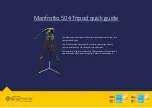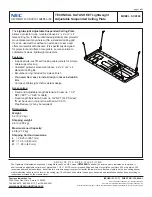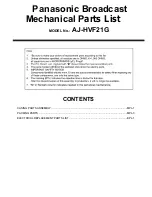
TB9100 Installation and Operation Manual
Replacing Modules
75
© Tait Electronics Limited May 2006
7
Replacing Modules
Caution
The TB9100 PA and PMU weigh between 10.1lb
(4.6kg) and 12.8lb (5.8kg) each. Take care when
handling these modules to avoid personal injury.
Important
The cooling fans are mounted on the front panel and will
only operate when the panel is fitted correctly to the front
of the subrack. To ensure adequate airflow through the base
station, do not operate it for more than a few minutes with
the front panel removed (e.g. for servicing purposes). Both
the PMU and PA modules have built-in protection
mechanisms to prevent damage from overheating.
7.1
Saving the Base Station’s Configuration
Before replacing a module in the TB9100 base station, you should decide
whether you need to save its configuration data. If you are unsure whether
you have a record of the configuration, use the CSS to read the base station
and save the configuration file before removing any modules. Once you have
replaced the module, you will be able to restore the original configuration
by programming the saved configuration back into the base station.
If one or more of the modules is faulty, you may be unable to read the base
station. In this case, you will have to restore the configuration from a
back-up file. Refer to the CSS documentation for more information.
7.2
Preliminary Disassembly
Hot-pluggable
Modules
The reciter, PA and control panel are hot-pluggable and can be removed
from the TB9100 without powering down the whole base station. These
modules can also be removed without disrupting the system control bus
communications with the other modules in the base station system.
Important
The PMU must be connected to the system control bus at
all times. The terminating circuitry for the bus is located in
the PMU, and if the PMU is disconnected, the state of
much of the bus will be undefined. This may cause
corrupted data to be present on the bus when the reciter
reads the states of the switches on the control panel. This in
turn may result in random actuations of microphone PTT,
carrier, or speaker key, causing the base station to transmit
or the speaker to be actuated incorrectly.
Summary of Contents for TB9100
Page 1: ...MBA 00002 05 Issue 5 May 2006 TB9100 base station Installation and Operation Manual...
Page 6: ...6 TB9100 Installation and Operation Manual Tait Electronics Limited May 2006 Glossary 131...
Page 26: ...26 Description TB9100 Installation and Operation Manual Tait Electronics Limited May 2006...
Page 34: ...34 Maintenance TB9100 Installation and Operation Manual Tait Electronics Limited May 2006...
Page 60: ...60 Installation TB9100 Installation and Operation Manual Tait Electronics Limited May 2006...
Page 74: ...74 TB9100 Installation and Operation Manual Tait Electronics Limited May 2006...
















































